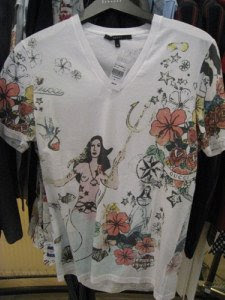T-shirts are typically made of cotton fibers (sometimes others), knitted together in a jersey stitch that gives a T-shirt its distinctive soft texture. T-shirts can be decorated with text and/or pictures, and they are often used to advertise (see human billboard), promoting products, companies, films and websites.
T-shirt fashions include many styles for both men and women, and for all age groups, including baby, youth, teen, adult and elderly sizes.
The T-shirt evolved from undergarments used in the 19th century, through cutting the one-piece "union suit" underwear into separate top and bottom garments, with the top long enough to tuck under the waistband of the bottoms. T-shirts, with and without buttons, were adopted by miners and stevedores during the late 19th century as a convenient covering for hot environments.
T-shirts, as a slip-on garment without buttons, originally became popular in the United States when they were issued by the U.S. Navy during or following the Spanish American War. These were a crew-necked, short-sleeved, white cotton undershirt to be worn under a uniform. It became common for sailors and Marines in work parties, the early submarines, and tropical climates to remove their uniform "jacket", wearing (and soiling) only the undershirt.[1]

A T-shirt with a protest art message on it in the mid-2000s.









